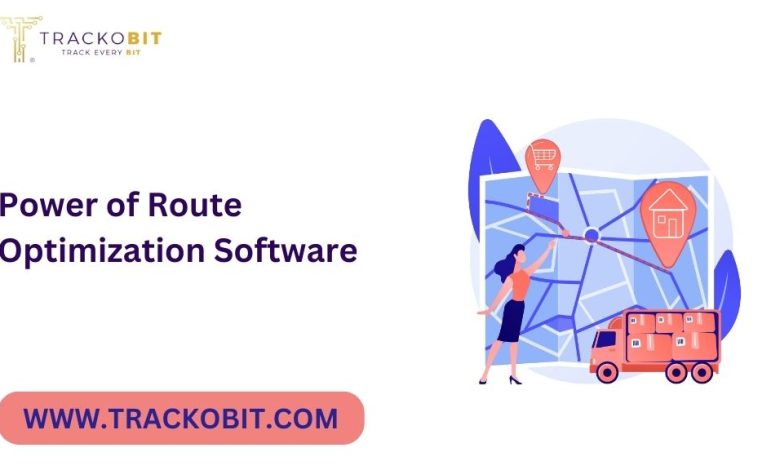Power of Route Optimization Software

World of logistics and transportation, the efficiency of routes can make or break operational success. Route optimization software has emerged as a transformative tool, offering businesses the ability to streamline and enhance their delivery and transportation processes. In this article, we explore the key features, benefits, and considerations of route optimization software, providing insights into how businesses can navigate the complexities of route planning with precision.
Key Features of Route Optimization Software
1. Real-Time Route Planning
At the core of route optimization software is real-time route planning. The best solutions leverage live data, considering factors such as traffic conditions, weather, and road closures to dynamically adjust routes for optimal efficiency.
2. Multi-Stop Optimization
For businesses with multiple stops or deliveries, multi-stop optimization is crucial. The software should efficiently sequence stops to minimize travel time, reduce fuel costs, and enhance overall productivity.
3. Dynamic Route Adjustments
Flexibility is key in the dynamic world of transportation. Top-tier route optimization software allows for dynamic adjustments, enabling quick responses to unexpected events, changes in delivery priorities, or new orders.
4. GPS Integration
Seamless integration with GPS technology enhances accuracy in route planning. The best route optimization software integrates with GPS systems to provide real-time tracking, ensuring that drivers stay on the optimized route and allowing for continuous monitoring.
5. Vehicle-Specific Optimization
Different vehicles have varying capabilities and constraints. The software should consider vehicle-specific factors such as size, weight capacity, and fuel efficiency to tailor routes based on the characteristics of each vehicle in the fleet.
6. Traffic Prediction and Avoidance
Anticipating and avoiding traffic bottlenecks is a key feature. Route optimization software with traffic prediction capabilities uses historical data and real-time information to navigate around congested areas, minimizing delays.
7. Cloud-Based Accessibility
In a connected world, cloud-based accessibility is essential. The best route optimization software is accessible from anywhere with an internet connection, allowing for remote planning, monitoring, and adjustments.
8. Reporting and Analytics
Data-driven insights contribute to continuous improvement. Route optimization software should provide robust reporting and analytics tools, offering detailed insights into key metrics such as delivery times, fuel consumption, and overall route efficiency.
Benefits of Implementing Route Optimization Software
1. Cost Reduction
Efficient routes lead to cost savings. Route optimization software helps businesses minimize fuel costs, reduce vehicle wear and tear, and enhance overall operational efficiency, contributing to significant cost reduction.
2. Improved Delivery Times
Optimized routes result in improved delivery times. Businesses can provide more accurate delivery estimates, meet customer expectations, and enhance overall customer satisfaction by consistently delivering on time.
3. Enhanced Driver Productivity
Efficient routes contribute to enhanced driver productivity. With optimized schedules and reduced travel times, drivers can complete more deliveries in a given timeframe, leading to increased overall fleet productivity.
4. Better Resource Utilization
Optimizing routes enables better resource utilization. Businesses can allocate resources more effectively, ensuring that each vehicle is used to its maximum capacity and reducing the need for additional vehicles.
5. Environmental Impact Reduction
Efficient routes translate to reduced fuel consumption and lower carbon emissions. Route optimization software contributes to environmental sustainability by minimizing the ecological footprint of transportation operations.
Considerations When Choosing Route Optimization Software
1. Scalability
Choose route optimization software that can scale with the growth of your business. Whether you have a small fleet or anticipate expansion, the software should accommodate changing needs and increasing route complexities.
2. Integration Capabilities
Consider the integration capabilities of the route optimization software. Seamless integration with other business systems, such as fleet management software and ERP solutions, ensures a unified and interconnected operational environment.
3. User-Friendly Interface
A user-friendly interface is crucial for successful adoption. The software should have an intuitive design that minimizes the learning curve for users, ensuring efficient use without extensive training.
4. Customization Options
Evaluate the level of customization the route optimization software offers. It should provide businesses with the flexibility to tailor the interface, reports, and route parameters to meet their specific operational and management requirements.
5. Support and Training Resources
Robust customer support and training resources are vital for a smooth implementation process. Choose a vendor that offers comprehensive training for users and provides responsive support for troubleshooting and inquiries.
Top Route Optimization Software Solutions
1. TrackoBit
Optimize your routes seamlessly with TrackoBit. Our advanced software, tailored for route planning, empowers businesses to enhance efficiency and reduce costs. TrackoBit’s intelligent algorithms analyze variables like traffic and distance, ensuring the most time and fuel-efficient routes for your vehicles. Experience streamlined operations and improved delivery timelines, all while minimizing environmental impact. Elevate your logistics game with TrackoBit – the go-to solution for businesses aiming to maximize productivity and minimize logistical challenges through cutting-edge route optimization technology.
2. Route4Me
Route4Me is a versatile route optimization software solution suitable for businesses of all sizes. It provides features for multi-stop optimization, GPS integration, and cloud-based accessibility.
3. MyRouteOnline
MyRouteOnline is a user-friendly route optimization tool with a focus on simplicity and effectiveness. It offers real-time planning, vehicle-specific optimization, and reporting tools for insightful analytics.
4. WorkWave Route Manager
WorkWave Route Manager is a scalable route optimization solution catering to businesses with diverse fleet sizes. It provides features for dynamic route adjustments, GPS integration, and detailed reporting.
5. Circuit
Circuit is a route optimization software designed for teams with multiple stops. It offers features for multi-stop optimization, GPS tracking, and cloud-based accessibility, making it suitable for businesses with complex delivery routes.
Conclusion: Charting a Course for Efficiency
In the intricate dance of logistics and transportation, route optimization software emerges as a guiding compass, charting a course for efficiency and success. By harnessing the power of real-time planning, dynamic adjustments, and data-driven insights, businesses can navigate the complexities of route optimization with precision. As the demand for swift and cost-effective transportation solutions continues to rise, investing in the right route optimization software becomes pivotal for businesses seeking to stay ahead in the competitive landscape of modern logistics.








